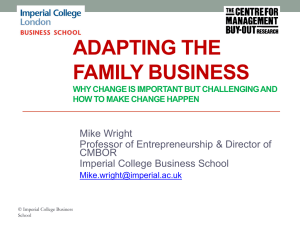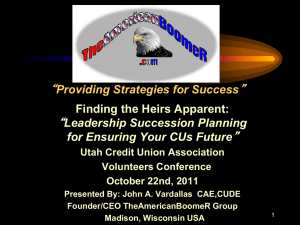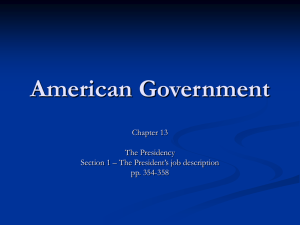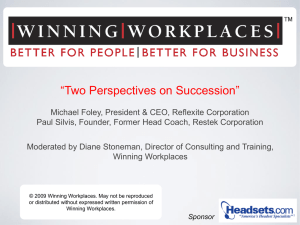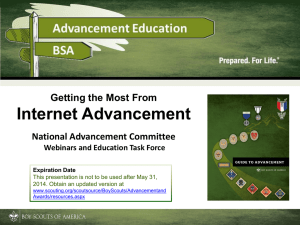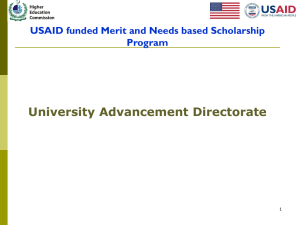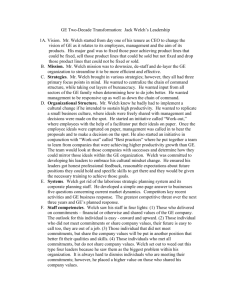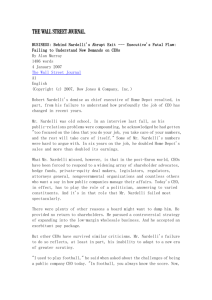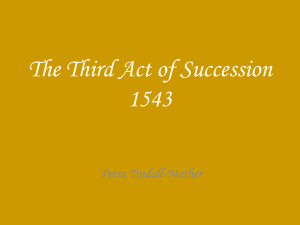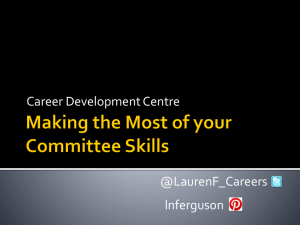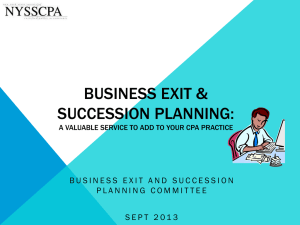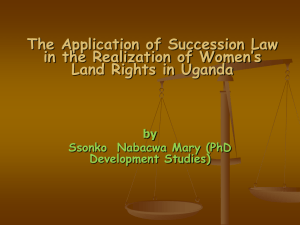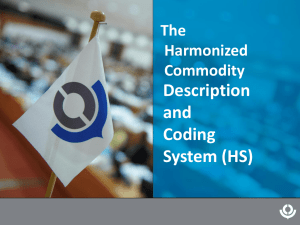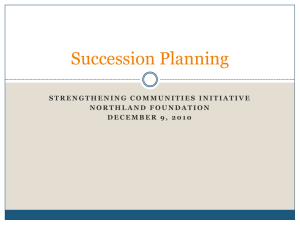CAREER PLANNING & Development INTERVENTIONS
advertisement
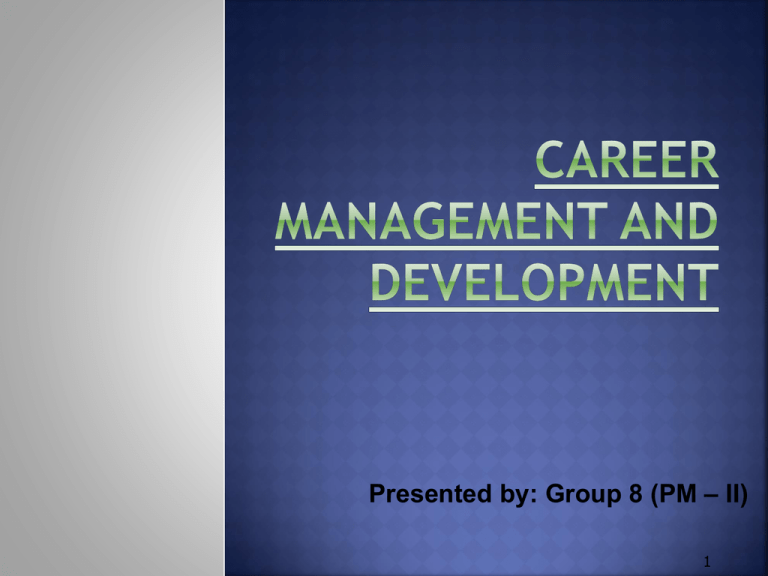
Presented by: Group 8 (PM – II) 1 Sudhir Abha Ravi Kujur(43) Kujur(54) Kumar Anand(18) Mansi Sharma(8) Christine Rahul D’Souza(32) Ekka(74) 2 1. When you think about the term “career,” what comes to your mind? 2. What is meant by the idea of a “new” employment relationship? 3. Does it make sense to speak of careers and career planning in today’s business environment? 4. What are the typical issues employees face as they progress through their careers? 5. What types of career development activities are actually used? 3 Understanding Influencing employee careers those careers Changing KSAOs to reflect changes in environment Assist employees in preparing for new work and enhance their employability 4 OLD If competent and reliable, job for life “Entitlement” mentality Paternalistic companies Loyalty expected up and down NEW No promise of Survivability Non-acquisition Room for promotion Job until retirement Money for your pension Undying loyalty up or down 5 Individuals responsible for their own development Must demonstrate value added to company Must understand nature and nuances of business 6 Provide Allow opportunities for development for employee participation in Decision making Career management Performance-based compensation 7 The property of an organization or occupation Progression Status and increasing success of a profession Involvement Stability in one’s work of person’s work pattern 8 “The pattern of work-related experiences that span the course of a person’s life.” Includes objective and subjective views of work 9 Must consider all of person’s skills, abilities, and interests Also must look at family and societal influences 10 “An ongoing process by which individuals progress through a series of stages, each of which can be characterized by relatively unique set of issues, themes and tasks.” 11 A deliberate process of: Becoming aware of Self Opportunities Constraints Choices Consequences Identifying career-related goals Working to attain career goals 12 “Process of preparing, implementing and monitoring career plans undertaken by the individual alone or in concert with the organization’s career systems.” 14 15 Stage views of adult development: Erik Erickson Daniel Levinson 16 Basic trust vs. mistrust Autonomy vs. shame and doubt Initiative vs. guilt Industry vs. inferiority Identity vs. role confusion Intimacy vs. isolation Generativity vs. stagnation Ego integrity vs. despair 17 18 Traditional Five model of career development stages in Greenhaus et al. model: Preparation for Work Organizational Entry Early Career Midcareer Late Career (0–25) (18–25) (25–40) (40–55) (55–retirement) 19 Protean career – individuals must reinvent their careers over time (Hall & Mirvis) Multiple career concept model: Linear – steady movement up the hierarchy Expert – devotion to expertise within an occupation Spiral – periodic moves across related occupations Transitory – frequent moves across different jobs or fields 20 21 Career exploration Awareness Goal of self and environment setting Strategy development Strategy implementation Progress toward goal Feedback Career from work and non-work sources appraisal 22 Employees Manager Company HR Manager 24 Take the initiative to ask for feedback from managers and peers regarding their skill strengths and weaknesses Identify their stage of career development and development needs Seek challenges by gaining exposure to a range of learning opportunities Interact with employees from different work groups inside and outside the company Create visibility through good performance 25 Roles Coach Responsibilities Probe problems, interests, values, needs Listen Clarify concerns Define concerns Appraiser Give feedback Clarify company standards Clarify job responsibilities Clarify company needs Advisor Generate options, experiences, and relationships Assist in goal setting Provide recommendations Referral agent Link to career management resources Follow up on career management plan 26 Provide information or advice about training and development opportunities Provide specialized services such as testing to determine employees’ values, interests, and skills Help Offer prepare employees for job searches counseling on career-related problems 27 Companies are responsible for providing employees with the resources needed to be successful in career planning: Career workshops Information on career and job opportunities Career planning workbooks Career counseling Career paths Assessing individuals to ensure they are available and qualified to fill key positions when they become vacant Assesses promotability of employees Managerial Professional Technical Assessments of organizational potential Potential ratings Assessment centers Succession planning 29 A career consists of a sequence of work related positions occupied by a person during a course of a lifetime. Employees progress through at least four distinct career stages: 1. The establishment stage (ages 21-26 years) 2. The advancement stage (ages 26-40 years) 3. The maintenance stage (ages 40-60 years) 4. The withdrawal stage (ages 60 years and above) CAREER STAGE CAREER PLANNING ISSUES Establishment What are alternative occupations, organizations, and jobs? What are my interests and capabilities? How do I get the work accomplished? Am I performing as expected? Am I developing the necessary skills for advancement? Advancement Am I advancing as expected? How can I advance more effectively? What long term options are available? How do I get more exposure and visibility? How do I develop more effective peer relationships? How do I better integrate career choices with my personal life? Maintenance How do I help others become established and advance? Should I reassess myself and my career? Should I redirect my actions? Withdrawal What are my interests outside of work? What postretirement work options are available to me? How can I be financially secure? How can I continue to help others? CAREER DEVELOPMENT INTERVENTIONS INTERVENTION CAREER STAGE PURPOSE INTENDED OUTCOME Realistic job preview Establishment Advancement To provide members with an accurate expectation of work requirements Reduce turnover, Reduce training costs, Increase Commitment, Increase Job Satisfaction Job Pathing Establishment Advancement To provide members Reduce turnover, with a sequence of Build organizational work assignments knowledge leading to a career objective Performance feedback and coaching Establishment Advancement To provide members with knowledge about their career progress and work effectiveness Increase productivity, Increase Job Satisfaction, Monitor Human Resource Development Assessment Centers Establishment Advancement To select & develop members for managerial & technical jobs Increase person job fit, Identify high potential candidates INTERVENTION CAREER STAGE PURPOSE INTENDED OUTCOMES Mentoring Establishment Advancement Maintenance To link a less experienced member with a more experienced member for member development Increase job satisfaction, Increase member motivation Developmental Training Establishment Advancement Maintenance To provide education & training opportunities that help members achieve career goals Increase organizational capacity Work-life balance planning Establishment Advancement Maintenance To help members balance work & personal goals Improve quality of life, Maintain member motivation Job rotation & challenging assignments Advancement Maintenance To provide members Increase Job with interesting satisfaction, work Maintain member motivation INTERVENTIONS CAREER STAGE PURPOSE INTENDED OUTCOMES Dual- Career accomodations Advancement Maintenance To assist members with significant others to find satisfying work assignments Attract & retain high quality members, Increase Job satisfaction Consultative Roles Maintenance Withdrawal To help members fill productive roles later in their careers Increase problem solving capacity, Increase Job satisfaction Phased Retirement Withdrawal To assist members in moving into retirement Increase Job satisfaction, Lower stress during transition Organizational Needs and Demands 1. Concern for effective and efficient operation, profit and productivity 2. Concern for all members of the organization 1. Concern for self-fulfilment and self-actualization 2. Concern for self 3. Need self-fulfilment and self actualization 4. Interest in challenging work only 3. Need to fill the rates in the organization structure 5. Bored by routine work using 4. Need for skills to fill all positions 6. How to utilize own potential 5. Need for some specific, well developed skills within or outside the enterprise 6. Best utilization of all talents within the organization and family 7. Manager to work in geographic location best for the organization specific skills 7. Location must suitable for self Individual Needs and Career Goals 1. Preparation of a personal profile (know thyself). 2. Development of long-term personal and professional goals. (Note, the terms "goals" and "objectives" will be used interchangeably.) 3. Identification and evaluation of the present environment, its threats and opportunities. 4. Forecasting and making predictions within the company as well as outside; identification of threats and opportunities. 5. Analysis of personal strengths and weaknesses. 6. Development of strategic career alternatives. 7. Testing for consistency of strategies and re-evaluation of career goals. 8. Evaluation and choosing from alternatives. 9. Development of short-range objectives and action plans. 10. Development of contingency plans. 11. Implementation of the career plan. 12. Monitoring progress. Involves identifying key management positions that the organization cannot afford to have vacant. PURPOSE Facilitates Identifies transition when an employee leaves. development needs of high potential employees and assists with their career planning Replacement Chart Identify key positions and possible successors for each of these positions . For Example :J. Smith V.P Marketing R.Jones Sales Director Ready now C.Williams Productions Manager 15 months S. Anderson Director Marketing Research 1 year 1. To ensure that key positions remain filled. 2. To identify critical training and development needs of both individual managers and the organization as a whole . Pros and Cons of Disclosing Succession Planning Disadvantages Advantages Do not tell High performers may leave the organization , unsure of their future. Allows flexibility as business needs change Tell Unrealistic expectations and implied contracts Retention Strategy In 1994, years before he retired from GE, Jack Welch had started the succession planning process. He developed a list of qualities, skills and characteristics a CEO should essentially have. In November 2000, General Electric Inc. (GE) announced that Jeff Immelt (Immelt), the president and CEO of GE Medical Systems, would be the successor to Jack Welch (Welch), the Chairman and CEO of the company. Welch was to retire in September 2001, after a successful 41-year stint at GE. The three candidates for the top spot at GE were Immelt, W. James McNerney (McNerney), CEO of GE Aircraft Engines, and Robert L.Nardelli (Nardelli), president and CEO of GE Power Systems 44 Choosing between the final trio "was the most difficult and agonizing decision, ever had to make….All the three exceeded every expectation we set for them.” Welch characterized Immelt as "a natural leader, and ideally suited to lead GE for many years,“. 45 But what did Jack Welch think of succession planning? One of his most admired skills was the ability to develop his subordinates so there was always someone ready to take his place when Jack was offered a promotion. Furthermore, in 1991, Jack Welch stated: "From now on, choosing my successor is the most important decision I'll make. It occupies a considerable amount of thought almost every day." The fact that McNerney and Nardelli were taken on as the CEOs of 3M and Home Depot, respectively, within weeks of their losing out to Immelt, was in itself taken by observers as testimony of corporate America's confidence in leaders groomed by GE. 46 Leadership Development in GE Succession planning is an ongoing, rigorous and challenging process at GE. GE adopted succession planning right from the mid-1900s. At GE, succession planning was not confined to only the top management, but was applied across all tiers of management. The managers of GE's various businesses were encouraged to identify potential candidates and fulfill their development needs, and transform them into efficient leaders ready to take up top jobs at the company. As part of CEO succession planning, GE shifted its key candidates from one business to another to enable them to gain experience across all its businesses. 47 The company used mainly annual performance reviews for identifying potential candidates, until the early 1980s. However, after Welch took over as the CEO, the succession planning process at GE became a more systematic process, with the use of various analytical tools and the involvement of the top management in leadership development and succession planning. Since early 1980s, the annual Human Resource Reviews (popularly called Session C) had been at the heart of succession planning at GE. The Session C process was reportedly given as much importance as financial monitoring in GE 48

